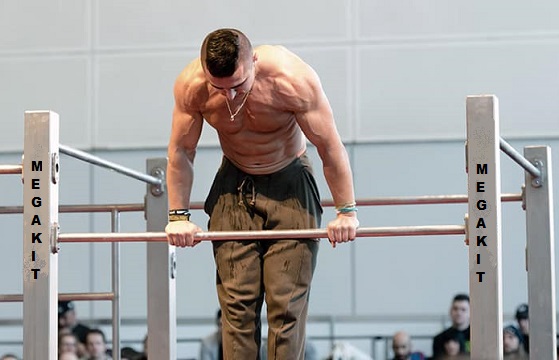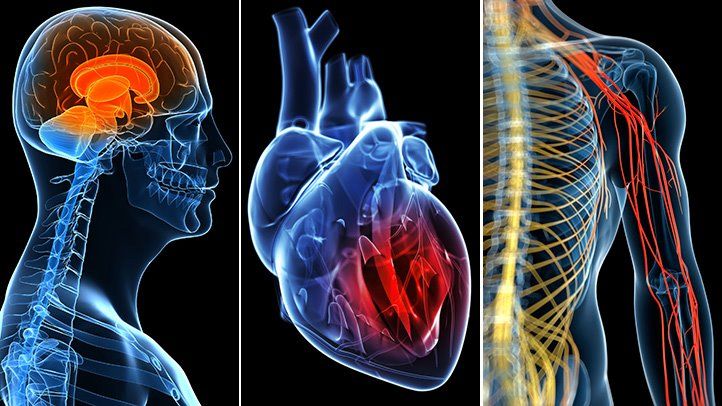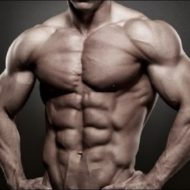What’s The Smartest Way To Build Lean Muscle and Combat Low Testosterone?
The “hidden triggers” 93% of people know they should do this…
Yes, the wrong information can be very complicated and confusing.
Especially if not done in steps to get the right feedback.
Depression, fatigue, low libido are symptoms of low testosterone.
Low testosterone can affect bones, heart, brain and body fat.
If you’re wondering whether there might be a connection…
Between diet, exercise and symptoms of low testosterone.
Keep reading to find the reason for a testosterone blood test…
By the end of this Free training…
1. You’ll see 3 key-points to help you boost testosterone.
2. Most people are missing these 3 key-points so they struggle.
3. Knowing the 3 key-points help to get results without trial and error.
4. Ultimately, you’ll be able to build muscle.
That gains momentum and can turn into something long-term.
I’ll be handing you the exact approach without the fluff and B.S.
This is like a new language that opens up new ways of understanding.
Once you understand how to apply the insights…

You can achieve your goals fast and hit the ground running…
Most men probably don’t think much about low testosterone causes.
And how working out is going to help them boost testosterone level.
Think about all the activities of daily living.
Functional mobility training aims to improve flexibility and mobility.
This ensures our bodies can move freely…
And efficiently in various activities and tasks.
For overall physical performance and reduce the risk of injuries.
Ultimately to get results, we need to take action.
And we shouldn’t wait for the right time.
Today is the right time and you can take advantage of this…
Best part is the results are reliable, long-term and consistent.
Testosterone is a vital hormone for men…
It crucial in muscle mass, bone density, red blood cell production.
And mental, including overall mood with energy levels.
Maintaining optimal testosterone levels is essential.
Testosterone is key for overall health and well-being.
Two key factors influencing low testosterone are diet and exercise.
This article explores the relationship between all these factors.
And step-by-step guide for increasing testosterone naturally.
Understanding Testosterone the latest updates and insights

Testosterone is an androgenic hormone.
It is produced primarily in the testes in men.
And in smaller amounts in the ovaries in women.
Including the adrenal glands in both men and women.
It’s responsible for development of male secondary sexual characteristics.
And the maintenance of muscle mass, strength, bone density, and libido.
Testosterone levels peak during adolescence and early adulthood.
And gradually decline with age.
Memory and cognitive ability may decrease with low testosterone levels.
Researchers tested a group of men aged 70+ over a 5 month period, participating in the Health and Ageing in Men Project.
Diet and Testosterone
Macronutrients and Testosterone
Proteins:
Essential for muscle repair and growth.
Proteins also play a role in hormone production.
Adequate protein intake is necessary for maintaining muscle mass, which can influence testosterone levels positively.
Fats:
Healthy fats, especially monounsaturated and saturated fats, are crucial for testosterone production.
Diets too low in fat can lead to decreased testosterone levels.
Avocados, nuts, olive oil, fatty fish are excellent sources of healthy fats.
Carbohydrates:
Carbs are important for energy, especially during intense exercise.
Complex carbohydrates, whole grains, vegetables, and legumes, provide sustained energy.
And help in maintaining stable blood sugar levels.
This is important for hormone balance.
Micronutrients and Testosterone
Zinc:
An essential mineral for testosterone production.
Foods rich in zinc include red meat, shellfish, legumes, and seeds.
Vitamin D:
Crucial for maintaining healthy testosterone levels.
Sun exposure is the best source of vitamin D.
It can also be found in fatty fish, fortified foods, and supplements.
Magnesium:
Supports biochemical reactions in the body.
This includes those involved in testosterone production.
Dark leafy greens, nuts, seeds, and whole grains are good sources.
Vitamin B6:
Helps in the regulation of androgen levels.
Foods rich in vitamin B6 include poultry, fish, potatoes, non-citrus fruits.
Dietary Patterns for Optimal Testosterone
Balanced Diet:
A diet rich in whole, unprocessed foods provides the necessary nutrients for overall health and hormone production.
Caloric Intake:
Overeating and undereating can negatively affect testosterone levels.
A balanced caloric intake that supports healthy body weight is crucial.
Timing of Meals:
Eating regular, balanced meals helps maintain stable blood sugar levels, which is important for hormonal balance.
Exercise and Testosterone

Types of Exercise
Resistance Training:
Weight lifting and resistance exercises are highly effective in boosting testosterone levels.
Compound movements like squats, deadlifts, and bench presses are particularly beneficial.
High-Intensity Interval Training (HIIT):
Short bursts of intense exercise followed by rest periods can significantly increase testosterone levels.
Steady-State Cardio:
It is beneficial for cardiovascular health.
Excessive endurance training can often lower testosterone levels.
It’s important to balance cardio with resistance training.
Exercise Frequency and Duration
Optimal exercise varies with age, fitness level, and personal goals.
Step-by-Step Guide to Increasing Testosterone
1 Exercise Routine
Exercising daily shows over time to increase GABA…
Gamma-aminobutyric acid (GABA) is a neurotransmitter.
This is a chemical messenger in our brain.
It slows down brain by blocking specific signals.
Signals in central nervous system (spinal cord).
GABA is known for producing a calming effect.
People won’t get the elevated levels of GABA…
If exercise is sporadically and inconsistent.
Consistent exercise increases GABA levels.
The results in better sleep, memory and tolerance to stress.
The transformational insights with a comprehensive guide…
Many factors can impact strength and exercise performance.
Including the time of day and day of the week.
The type of training intensity and amount of sleep.
Weight training:
15-20: Weight training (45-90 min, 3-14 times per week)
20-30: Weight training (45-90 min, 3-7 times per week)
30-40: Weight training (30-75 min, 3-6 times per week)
40-50: Weight training (30-60 min, 2-6 times per week)
50-60: Weight training (30-60 min, 2-5 times per week)
60-70: Weight training (20-45 min, 2-5 times per week)
70+: Weight training (20-45 min, 2-4 times per week)
Cardiovascular:
15-20: Cardiovascular (45-90 min, 4-6 times per week)
20-30: Cardiovascular (45-90 min, 3-6 times per week)
30-40: Cardiovascular (30-75 min, 3-5 times per week)
40-50: Cardiovascular (30-60 min, 2-5 times per week)
50-60: Cardiovascular (30-60 min, 2-5 times per week)
60-70: Cardiovascular (20-45 min, 2-5 times per week)
70+: Cardiovascular (20-45 min, 2-4 times per week)
HIIT:
15-20: HIIT (10-60 min, 3-6 times per week)
20-30: HIIT (10-60 min, 3-6 times per week)
30-40: HIIT (8-45 min, 2-5 times per week)
40-50: HIIT (8-40 min, 1-4 times per week)
50-60: HIIT (5-35 min, 1-3 times per week)
60-70: HIIT (5-30 min, 1-2 times per week)
70+: HIIT (5-20 min, 0-1 times per week)
Step 1: Optimize Your Diet
Include Healthy Fats:
Include sources of monounsaturated and saturated fats in your diet.
Aim for about 20-30% of your daily caloric intake from fats.
Prioritize Protein Intake:
Ensure you eat adequate protein to support muscle repair and growth.
Lean meats, fish, eggs, and plant-based proteins are excellent choices.
Balance Carbohydrates:
Focus on complex carbohydrates to maintain stable energy levels.
Whole grains, vegetables, and legumes should be staples in your diet.
Micronutrient-Rich Foods:
Eat a variety of foods to ensure you get enough zinc, vitamin D, magnesium, and vitamin B6.
Consider supplements if necessary, consult healthcare provider.
Maintain a Balanced Caloric Intake:
Avoid extreme diets.
Aim for a balanced caloric intake that supports a healthy body weight.
Step 2: Establish Effective Exercise Routine
Resistance Training:
Include body weight training sessions 3-5 times per week.
Also weight training that focus on compound movements.
You want to target multiple muscle groups.
HIIT Workouts:
Include 1-2 HIIT sessions per week to boost testosterone.
This is great for overall fitness, should be short but intense.
Cardio with Caution:
While cardio is important, balance it with resistance training.
Too much steady-state cardio can negatively impact testosterone levels.
Consistency and Progression:
Ensure your exercise routine is consistent and progressively challenging.
Gradually increase the intensity and volume of your workouts.
Step 3: Lifestyle Factors
Sleep: Aim for 7-9 hours of quality sleep per night.
Sleep is crucial for hormone production and overall health.
Stress Management:
Chronic stress can lower testosterone levels.
Do stress-reducing activities, deep breathing exercises.
And relaxing enjoyable hobbies.
Avoid Toxins:
Limit exposure to endocrine disruptors.
Toxins found in plastics, pesticides, and other chemicals.
Choose certified organic foods when possible.
And use natural personal care products.
Regular Health Check-Ups:
Regular visits to a healthcare provider.
This can help monitor your hormone levels and overall health.
Address underlying health issues that may affect testosterone levels.
Diet, Exercise and Low Testosterone Causes Conclusion
Optimizing testosterone levels requires a holistic approach.
Include balanced diet, regular exercise, healthy lifestyle choices.
By focusing on nutrient-dense foods, effective exercise routines.
And managing lifestyle factors.
You can naturally boost testosterone levels.
And improve your overall health.
The insights provide a valuable framework for achieving these goals.
These can be tailored to different age groups and fitness levels.
Implementing these strategies can lead to significant improvements in muscle mass, energy levels, and overall well-being.

